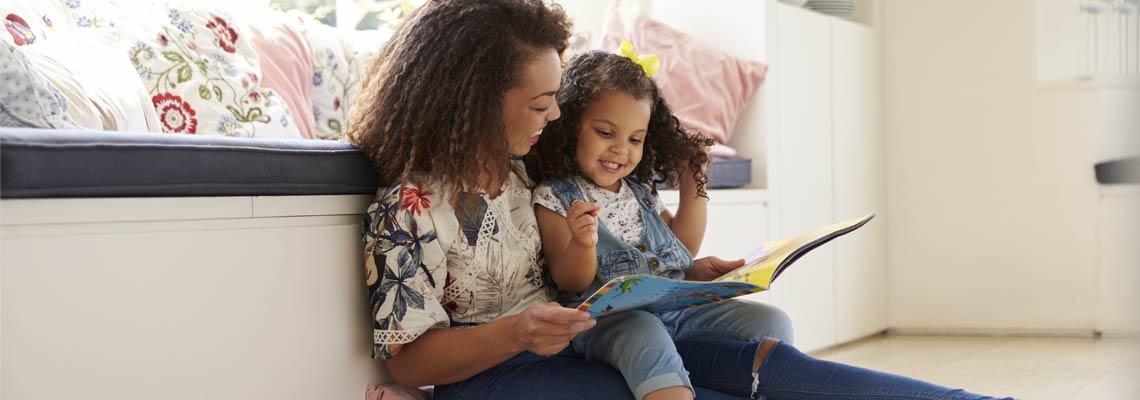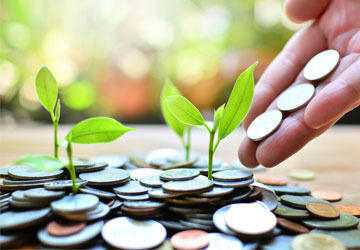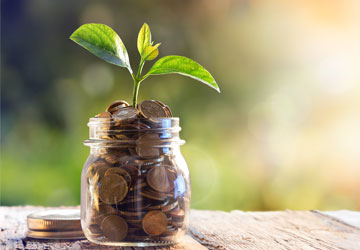
Investing for your children’s future
Whoever said the best things in life are free obviously didn’t have children. Let’s face it: kids are expensive. But, of course, they’re worth every penny.
Decided it’s time to start saving for your little one? Putting money aside for your child is a great way to prepare them for their future. It can also teach them valuable lessons about managing their finances and develop a savings habit.
All parents want to give their child the best possible start in life, but what are the best ways to invest for children? Let’s take a look at some options.
Children’s bank or building society accounts
Opening a children's savings account with a bank or building society is the simplest way to get started. Unlike some accounts, you can access your money anytime.
Letting your child manage their own money helps them learn to save from a young age.
Would my child pay tax?
Your child has the same personal savings allowances as you. This means that, as long as they don’t have any other income, they can earn up to £18,570 of interest each year before needing to pay tax.
However, to prevent tax avoidance, any interest over £100 per year on money gifted by parents will be taxed as it if was the parents.
Junior ISAs (individual savings accounts)
These are a great way of giving your kids a great financial start to life. Junior ISAs are tax-free savings accounts for under-18s. There are two types of Junior ISA and children can save into one or both types:
- Cash Junior ISA - They won’t pay tax on interest earned from the money they save.
- Stocks and shares Junior ISA - Their money is invested, and they won’t pay tax on capital growth (the amount their investment increases in value) or dividend income.
In 2025/26, you can save up to £9,000* in a Junior ISA and your child can take control of their account at 16, but they can’t take out any money until they’re 18.
The bonus benefits of a junior ISA
Because 16 and 17-year-olds can hold both a Junior and adult ISA, they can currently invest up to £29,000 each year so could potentially boost their tax-free savings by £58,000 in just two years.
If a junior ISA could be a good fit for your child, you can find out more here.
If you’d prefer to have more control over their savings, take a look the next section about trusts.
Premium Bonds
While NS&I no longer offer children’s bonds, you can still invest in the old favourite – Premium Bonds. Saving for your child with NS&I Premium Bonds is safe and flexible, with funds backed by the UK government. Instead of interest, your child has the chance to win tax-free cash prizes every month. You can start from £25 and access the money anytime, making saving simple and engaging.
Trusts
Trusts are a legal agreement where you put assets into a trust and choose a trustee to manage those assets (whether it’s money, buildings, land or investments) for your child or children.
A trustee might be a trusted friend, professional accountant or trust company, for example – it just needs to be someone trustworthy and capable of managing money well.
There are lots of different types of trust. Here are some examples:
- Bare trust: lets your child have the assets you saved for them when they turn 18 (in England and Wales) or 16 (in Scotland).
- Discretionary trust: gives power to the trustees, who can decide when and how your child should get the assets in the trust.
Click here to explore the other types of trust you could set up.
Junior Self-Invested Personal Pension (SIPP)
Your child’s retirement may seem a world away, but if you’re someone who likes planning for the long-term, you could open a Junior SIPP. Just think of the investment growth which could be achieved over 50 or 60 years.
Junior SIPPs get 20% tax relief, just like adult pension schemes. This means that if you save £2,880 a year, then £3,600 goes into the SIPP (which is the limit that can be paid into a Junior SIPP unless your child has earnings of more than this).
A few more things to consider:
- Tax benefits and rules depend on your personal situation.
- Tax benefits and rules will probably change between now and when your child grows up.
- Your child can’t get their money out of a Junior SIPP until they are 57.
- The value of investments can go down as well as up, so your child might get back less than you put in.
What next
When it comes to investing in your child’s future, the early you can start the better. Putting aside just a small amount of money on a regular basis can really add up over time using the power of compound interest.
Compound interest is the interest earned on previously earned interest. So, let’s look at how this can supercharge savings over time.
Let’s assume two scenarios. In the first, you start investing a £100 a month in your child’s future from the date they’re born. In the second, you don’t start to save until they’re 10 and then invest £100 a month. In both cases, this example assumes an interest rate of 3.5% paid monthly into a cash ISA.
Saving from birth
| Age | Total Invested (£) | Interest (£) | Value (£) |
|---|---|---|---|
| Age | |||
| 1 | 1,200 | 21 | 1,221 |
| 5 | 6,000 | 348 | 6,348 |
| 10 | 12,000 | 1,525 | 13,525 |
| 15 | 18,000 | 4,027 | 22,027 |
| 18 | 21,600 | 6,447 | 28,047 |
| 20 | 24,000 | 8,551 | 32,551 |
| 21 | 25,200 | 9,635 | 34,835 |
| 25 | 30,000 | 14,070 | 44,070 |
Saving from 10 years old
| Age | Total Invested (£) | Interest (£) | Value (£) |
|---|---|---|---|
| Age | |||
| 10 | 0 | 0 | 0 |
| 15 | 6,000 | 348 | 6,348 |
| 18 | 9,600 | 927 | 10,527 |
| 20 | 12,000 | 1,525 | 13,525 |
| 21 | 13,200 | 1,900 | 15,100 |
| 25 | 18,000 | 4,027 | 22,027 |
So, we can see, making relatively modest monthly savings on behalf of your children can give them a great financial boost when they need it the most. By the time they’re 18 to 20, they could have a decent sum to either put towards their education or a decent deposit for their first house – so there will be no excuse not to move out! Or, they could continue to invest towards fulfilling their future plans and aspirations.
To put it another way, if you don’t start saving until age 10, you would need to save over £220 a month to get £32,000 by age 20.
This article was last updated in August 2025
Featured articles



